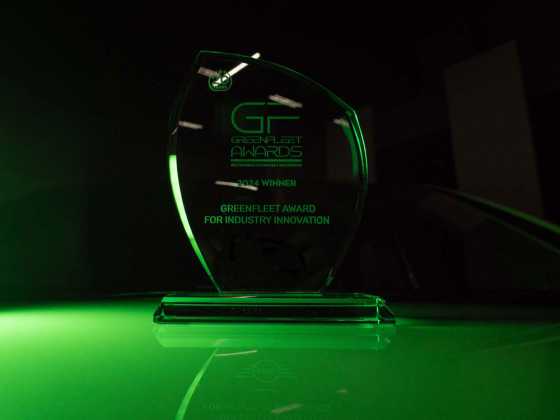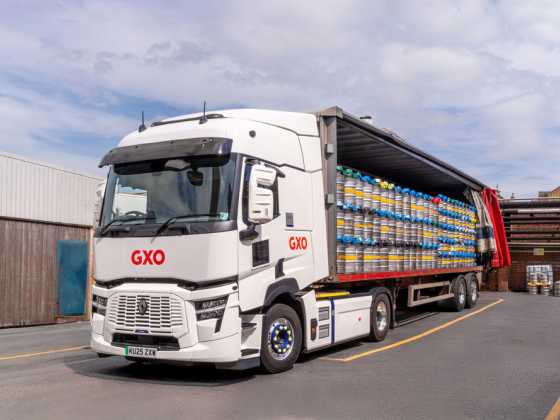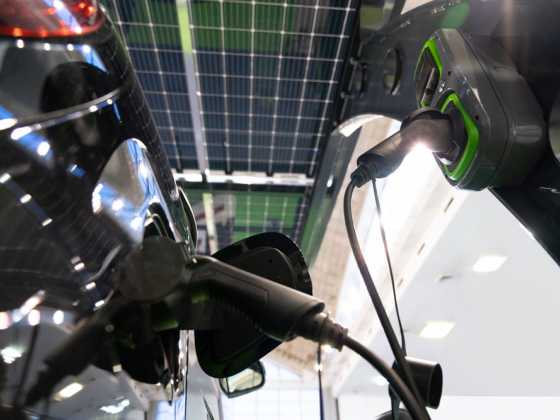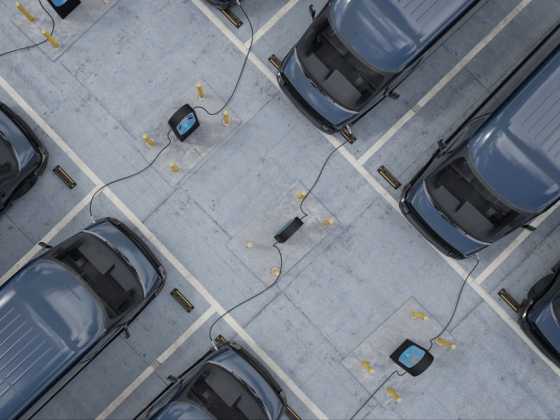Navigating 1,200 electric miles on the EV Rally 2023
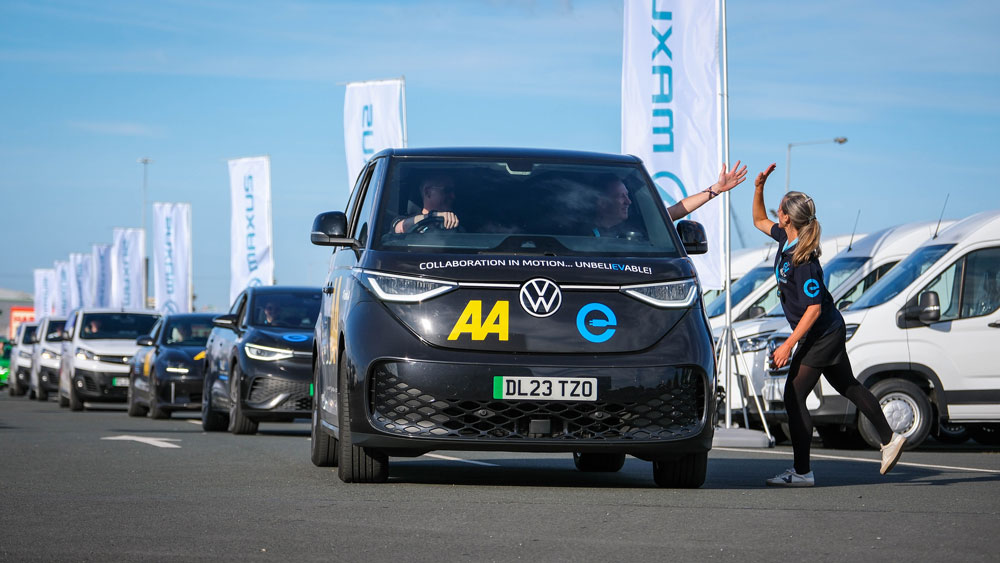
After being named the media industry’s ‘Event of the Year’ in 2022, the EV Rally pushed the boundaries even further this year, with a more challenging route, a more diverse mix of vehicle sizes, and more participants – all with the aim of testing how electric vehicles and public charging infrastructure measure up. So how did the teams get on?
Covering a challenging route of over 1,200 miles and visiting all the capital cities of the UK and Ireland, the 2023 EV Rally, sponsored by Lex Autolease, was a real-life test of how electric vehicles and the public charging infrastructure measure-up in the real world.
With the 2030 ban on new petrol and diesel vehicles fast approaching, there are now around 80 electric models available across every vehicle segment – compared with just 21 in 2018, according to the SMMT. And according to Zapmap, there were 44,408 electric vehicle charging points across the UK at the end of June 2023. Yet an anti-EV rhetoric lingers, with headlines saying the public charging infrastructure is not up to scratch, and recently, there has even been unrest over environmental targets and clean air measures.
The aim of the rally, which took place 3-7 July, was to test how electric vehicles perform on a long and challenging route, using the public charging infrastructure. It was also to highlight the areas for improvement in the infrastructure, and this year, with the inclusion of two electric trucks, to see how the charging network performed for heavy-duty vehicles.
For the first time, the EV Rally travelled over to Ireland, which has far less chargepoints than the rest of the UK, to see how teams would get on.
As with previous years, the rally was made possible thanks to the collaboration between the organisers, teams and partners – made up of charging providers, vehicle manufacturers, fleet operators, breakdown providers, telematics companies, host authorities, and many more.
The Route
The EV Rally covered over 1,200 miles, with teams travelling from the start line in Cardiff, then going to London, Edinburgh, Belfast, and Dublin – with designated checkpoints at clean energy projects, iconic sites and charging hubs on route.
The first day of the Rally saw teams gather at Cardiff Bay Barrage, where Caro Wild, Cabinet Member for Climate Change at Cardiff City Council, waved teams off from the start line. The convoy then headed to the first check point in Bristol, where headline sponsors Lex Autolease held an EV showcase at the Amphitheatre, supported by Bristol City Leap and Bristol City Council.
Teams then travelled to Heathrow to visit the Hertz electric rental site. The next checkpoint was at OVO Wembley Arena where teams received a joyful welcome from the OVO Energy cheer-leaders. Checkpoint four took place at bp pulse’s EV hub in Kettering, where vehicles could charge on one of their ten 300kWh units. The Rally then made its way to the final checkpoint of the day at Leicester Tigers stadium for the Europcar showcase, in the shadow on the new Europcar West Stand. Teams finished the day at Nottingham where they were able to charge overnight at Nottingham City Council’s innovative charging facilities.
All-electric miles
Day two of the Rally covered 316-miles, making it the longest day. Heading off from Nottingham, the teams visited York’s hyper hubs for the Churchill, Maxus and Speedy showcases. Checkpoint two was at Washington where the Rally’s Charge Card Partner, Paua, showcased its product at the Fastned hub. Team DPD then presented on its progress in fleet electrification at its neighbouring NE depot.
The Rally then visited ORE Catapult, the UK’s leading technology innovation and research centre for offshore renewable energy, before heading to the England-Scotland border, where teams put two wheels in each country. Day two ended in Edinburgh at East Lothian Council’s Wallyford hub.
On day three, the Rally left Edinburgh and headed to Kilmarnock for a charge at the innovative Hub at the Athletics Stadium, before making its way to Cairnryan/Stranraer to hop on the Stena ferry to Belfast. Day three ended at an event called EV Rally LIVE!, which took place at Titanic Belfast. This allowed teams to network with a gathering of Belfast EV dealerships, as well as hear about the innovation taking place from teams Mercedes-Benz Trucks, Drivetech, AA, DAF-Cenex, Webfleet, and Black Horse. Kempower was the Official Charging Partner for EV Rally LIVE! and brought with them the innovative ‘Movable DC’ unit for drivers to get charged up for day four.
Thursday was ‘Game of Thrones Day’, with the Rally visiting two filming locations from the iconic series – Ballintoy, the scene for Pyke, The Iron Islands, and Ballimoney, the Dark Hedges used to shoot the ‘King’s Road’.
Other day four checkpoints included Cloughmills, a new Weev mini-hub showcased at the McGuckian Milling Company, the Giants Causeway, the most visited tourist spot in Northern Ireland, the Battery Bar on the banks of Lough Neagh, and the beautiful town of Newry. During their time in Northern Ireland, teams had access to the Weev charging network.
The final day of the 2023 EV Rally saw participants take in the beauty of Ireland, with innovation and clean energy projects as checkpoints.
EasyGo was the Rally’s Charging Partner for the Republic of Ireland and gave teams access to 4,000 public chargers on the EasyGo, ESB e-Cars, and Circle K IONITY networks.
After crossing the border into the Republic of Ireland, the Rally took teams to the Bord Na Mona Mountlucas wind farm, an impressive site, housing 28 wind turbines that generate 84MW, capable of powering more than 50,000 homes every year.
The next checkpoint was Poulapoucha Lake which provided a stunning backdrop, before heading through the Wicklow Mountains National Park to the Powerscourt Estate, previously owned by the family behind the Slazenger brand.
The Rally finished in Dublin for a wrap-up party kindly hosted by Harris Automotive, distributors of Maxus vehicles.
Teams and partners
Headline sponsor Lex Autolease had its own team, which included motoring journalist and Fair Charge campaigner, Quentin Willson. Team Lex took to the roads in an interesting line up of electric vehicles, including the new-to-market Ora Funky Cat, Volkswagen ID Buzz and ID Buzz Cargo, and Jaguar I Pace. They also had the Maeving electric scooter on board the ID Buzz Cargo, which was brought out during the Rally to showcase two-wheeled electric mobility.
Team Maxus entered the Rally with its new T90 EV and MIFA 9 electric vehicles, to showcase their capabilities on long journeys. As the Rally’s Official Logistics Partner, Maxus also provided vehicles for the event organisers to get around.
Hertz joined the Rally with its own team and as the Official Vehicle Partner, where they provided two Tesla Model 3s to the event organisers, and two for the media team, driven by EV Café’s Sara Sloman and John Curtis.
Offering breakdown reassurance to teams, the AA was once again the official Roadside Assistance Partner for Rally. Team AA, with president Edmund King OBE at the helm, drove alongside team Drivetech, who was the event’s Official Driver Training partner, offering tips on getting the most out of an electric vehicle.
Paua was the Official Charge Card Partner, providing teams with the Paua card and app, which enabled them to find and charge, anywhere on the Paua roaming network. Team bp pulse also supported the charging by giving teams use of their RFID cards and access the new ultra-rapid chargers at its new hub in Kettering.
Bridgestone, the Rally’s Tyre Partner, navigated the route in a Volkswagen ID.4 equipped with its ‘EV ready’ Turanza 6 tyres. They took part alongside Webfleet, part of Bridgestone Mobility Solutions, who was the technology partner for the rally. Webfleet was responsible for measuring the performance of the vehicles by installing specialist LINK boxes connected to Webfleet’s fleet management software. This gave data on routes, vehicle battery levels and miles per kWh.
Although battery EVs emit no tailpipe emissions on the road, a CO2 footprint still results from the electricity generation for vehicle charging. Therefore Webfleet kindly offset the carbon footprint from participating vehicles and from the ferry crossing, in collaboration with international NGO Justdiggit.
GREENFLEET’s current Mobility Provider of the Year, Europcar, took part in the EV Rally, to fully immerse themselves in the world of electric mobility. They also showcased their newly-opened Europcar stand at Leicester Tigers RFC stadium.
Team National Grid was led by head of fleet, Lorna McAtear, who was joined by BBC South’s Transport Correspondent Paul Clifton and co-driver, daughter Frankie. On day two of the Rally, Lorna addressed participants at ORE Catapult on the grid’s role in vehicle electrification, as well as sharing her experience of running an electric fleet.
Team Iveco were behind the wheel of its eDaily van, which had recently set a new towing record for an EV, hauling more than 153 tonnes. The team added to this challenge by towing a JCB up one of the UK’s steepest streets – Blake Street in Sheffield, which it did with ease.
GREENFLEET’s Private Sector Fleet Manager of the Year, Aaron Powell, recognised for his success in fleet electrification, drove for team Speedy, and insurers Churchill formed a team to get a better understanding of electric vehicles and infrastructure, as their product evolves to include electric vehicles.
Team Black Horse Finance, which is part of Lloyds Banking Group, also took part, with the aim of promoting a better understanding of the used electric vehicle market and how crucial it is for wider EV adoption.
Team Mercedes-Benz Trucks took part in the e-Actros, which navigated the rally smoothly despite being 27-tonnes. It even achieved 325 miles on a single charge from Cardiff to Nottingham on day one – and was the only vehicle that did not charge on the opening day.
DAF Trucks and Cenex, who are working together on the DfT-funded Battery Electric Truck Trial (BETT), teamed up to enter one of the DAF Electric LFs from the trial, to see how the vehicle performs on long and challenging journeys.
So how did teams get on?
Overall, teams successfully navigated the rally with no major charging difficulties. But the rally did highlight the need for careful planning when embarking on a long journey with an electric vehicle. Teams had to calculate the distance between charging stations as well as the charging speed of each station. Apps, such as the EV Rally ‘white label’ app developed by Paua, were used to get real-time information on charger availability, pricing, and location. And there was a need to understand the different payment methods used by each.
As the maps showed, the EV charging provision in Ireland is sparse. Indeed, new data from the Department for Transport shows that Northern Ireland has the lowest level of public charge point provision in the UK, with just 23 devices per 100,000 people. What’s more, many of the charge points are low powered.
Although good charging provision can be found from Weev and EasyGo – and more is planned, remote locations in Ireland still suffer. In some areas of poor coverage, outside the box thinking was required. A visit to car dealerships Shelbourne Motors and TrustFord Motors allowed teams to charge on their high powered chargers. And BBC Journalist Paul Clifton and co-driver Frankie were able to plug the gap by renting a private household charge point.
The two electric trucks – the DAF FL and Mercedes-Benz E-Actros, also experienced charging challenges, as there is currently not a publicly accessible charging infrastructure dedicated for larger electric vehicles. Careful planning was therefore required, and some alternative solutions were sought, including charging at Nottingham City Council’s depot and on one of DPD’s sites.
Adam Bennett, EV & sustainability manager at DAF Trucks UK, commented: “The event has highlighted the clear and present need for dedicated infrastructure for larger vehicles across Europe. Minor adaptations to existing car charging points would be a good first step in improving access for trucks. But only a dedicated infrastructure for trucks will have the desired impact on the adoption of EVs by operators. We have shown that our trucks are ready! It is now time for the authorities all around Europe to boost the charging infrastructure.”
James Venables, head of future sustainability at Mercedes-Benz Trucks UK, added: “There is no real truck charging infrastructure on the UK strategic road network at the moment, so from our perspective, driving a battery electric truck has been a real learning exercise.”
The winners in efficiency and safety
So how did teams get on, in terms of efficiency and safety? Through Webfleet’s telematics insights, the safest and most efficient teams were identified throughout the five days.
Team Cenex came top of the league table for being the most efficient in a Hyundai Ioniq 5, followed by Speedy Services in a BMW iX 40 in second place, and team National Grid in a Vauxhall Vivaro E, in third place.
The top three teams for safety and sustainability were National Grid, driving a Vauxhall Vivaro E, team Hertz, driving a Polestar 2, and team Cenex, behind the wheel of a Hyundai Ioniq 5.
All fifty vehicles made it to the finish line, with some experiencing more challenges than others, in particular, those in vans and trucks. The rally showed that the vehicles are up to the job, but there are improvements that need to be made to the charging infrastructure. Most of these are well documented, and the government aims to address these through more funding for chargepoints, as well as through the new charging regulations, which cover reliability, clearer pricing, contactless payments and open data.
It will therefore be interesting to see how the charging infrastructure measures up this time next year, when the 2024 EV Rally gets waved off once again.



